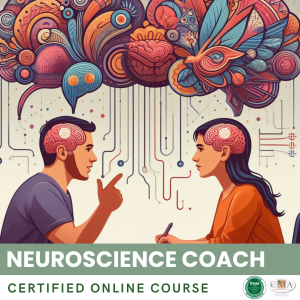Working on one’s own wounds and shadow areas is a fundamental aspect of personal and professional development for the spiritual healing coach. Indeed, to effectively guide their clients through their transformation process, it is essential that the coach has themselves explored and integrated their own emotional issues and shadow parts.
Emotional wounds are psychic sufferings that often originate in childhood or in major life experiences. They can be linked to traumas, abuses, emotional deficiencies, or painful events. These wounds create limiting thought and behavior patterns that are repeated throughout life, hindering self-fulfillment and self-realization.
As a coach, it is crucial to identify one’s own wounds and understand how they influence the way one relates to others. A coach who is unaware of their own issues risks unconsciously projecting their problems onto their clients or being triggered by certain situations. This can interfere with the coaching relationship and impair the quality of the coaching.
Shadow Coaching involves exploring and integrating aspects of oneself that one tends to reject, repress, or deny. These shadow parts can be emotions considered negative such as anger, shame, or fear, but also personality traits considered undesirable. By embracing and taming their shadow areas, the coach develops greater emotional maturity and better self-knowledge.
A coach who has deeply worked on themselves will be better able to create a safe and compassionate space for their clients. They can empathetically and non-judgmentally welcome the other’s shadow parts, having learned to embrace them within themselves. Their authentic and vulnerable presence will naturally invite the client to open up and show all their facets.
There are numerous approaches to working on one’s wounds and shadow areas. Psychotherapy is a great way to deeply explore one’s personal history and heal past traumas. Humanistic therapies such as Transactional Analysis, Gestalt or person-centered approach offer powerful tools to identify and transform limiting patterns.
Body and energy work is also very effective in releasing cellular memories and blocks related to wounds. Techniques such as Biosynthesis, Reiki, or Kinesiology allow emotional knots to be untied through the body and feeling experience.
The practice of meditation and mindfulness is also an excellent way to develop the inner witness and compassionately welcome everything that presents itself within, including shadow parts. By cultivating presence to oneself in the present moment, the coach learns to be with what is, without trying to escape or control it.
Personal development is a long journey that requires commitment, humility, and perseverance. The spiritual healing coach is encouraged to make their own growth process a priority, regularly taking time for retreat, supervision or therapeutic work. By taking care of their own wounds, they become a powerful catalyst for the healing and transformation of their clients.
Key takeaways:
– Working on one’s own wounds and shadow areas is essential for the personal and professional development of the spiritual healing coach.
– Emotional wounds create limiting thought and behavior patterns that hinder self-fulfillment and self-realization.
– A coach who is unaware of their own issues risks projecting their problems onto their clients or being triggered, thereby negatively affecting the quality of coaching.
– By embracing and taming their shadow areas, the coach develops greater emotional maturity and better self-knowledge.
– A coach who has deeply worked on themselves will be better able to create a safe and compassionate space for their clients.
– There are various approaches to working on wounds and shadow areas such as psychotherapy, humanistic therapies, body and energy work, and meditation and mindfulness.
– Personal development is a long journey requiring commitment, humility, and perseverance from the spiritual healing coach.
👉 To download docx (Editable) file click here : Click here
👉 To download PDF file click here : Click here
👉 To download MP3 file click here : Click here







